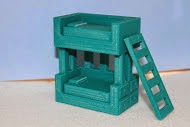Back in October 2013, I had the opportunity to attend the OESIS conference in Boston. It was a fascinating conference offering a variety of workshops that discussed technology use in the classroom. Keynote speaker, Tom Vander Ark, author of Getting Smart: How Digital Learning is Changing the World, mentioned curating your own textbook for a course. This was a new and intriguing idea for me, as the teachers in my math department are constantly looking for textbooks that adequately meet the goals of our courses. We supplement material often, either because the book we have is not challenging enough, does not cover a specific topic, or fails to provide adequate practice. Wouldn’t it make sense to put all of these supplemental resources in one place, accessible to students, and organized to meet the course objectives? I have thought, throughout the year, that this would be a great idea, but have been overwhelmed by the process, not quite sure where to begin.
I ran across the article, How to Easily
Make your Own Textbook, by
Delores Gende in Edudemic, published in January 2012. In the article, she lists
three steps in the development process, Aggregation, Curation and Creation. This process
breakdown makes this daunting task seem more attainable. Looking ahead, this
may be something I will try to do.
According to Gende, aggregation involves bookmarking
information that would be used in your textbook is this first step. I realized that I had been doing some form of
this bookmarking using ScoopIt.com and Pinterest.com. I have been saving resources
and articles of interest in these places for some time. Organizing my resources
for textbook curation will be a new challenge. This will require me to analyze
these recourses in line with my curriculum and teaching objectives. It will be
important to provide interactive tools that allow my students to allow them to
manipulate graphs and discover patterns. Sources for interactive tools that I
will use include Geometer’s Sketchpad,
Khan Academy and Applets on
the Web. Finally, I will need to create the actual textbook in a place that my
students can access the information easily. CK-12 provides great examples and free
resources and pre-created Flexbooks to help teachers get started.


